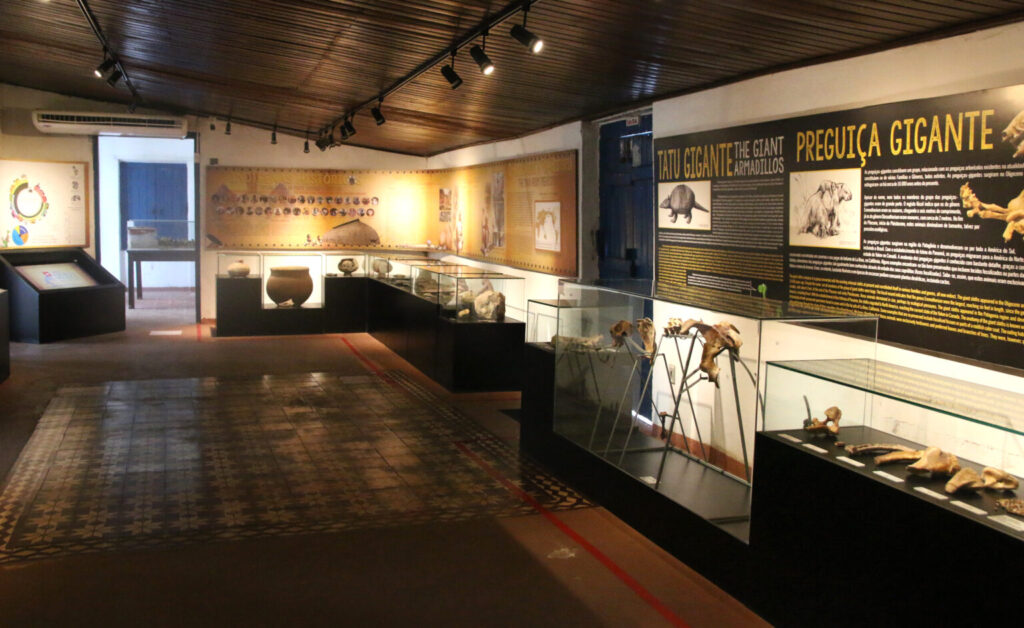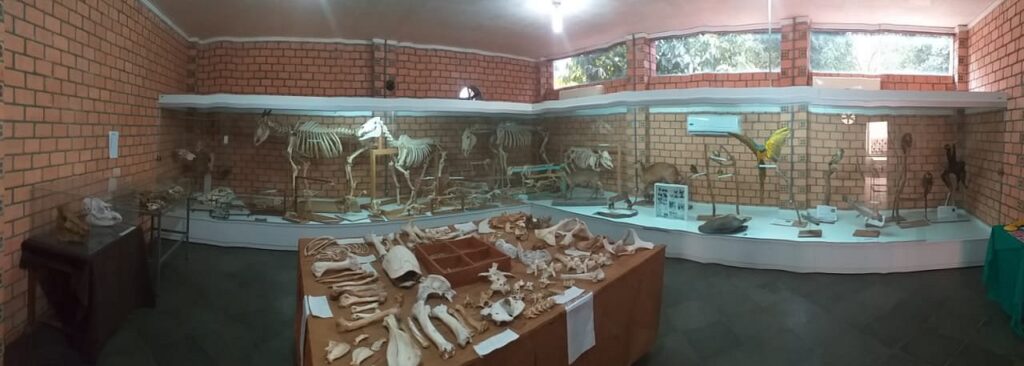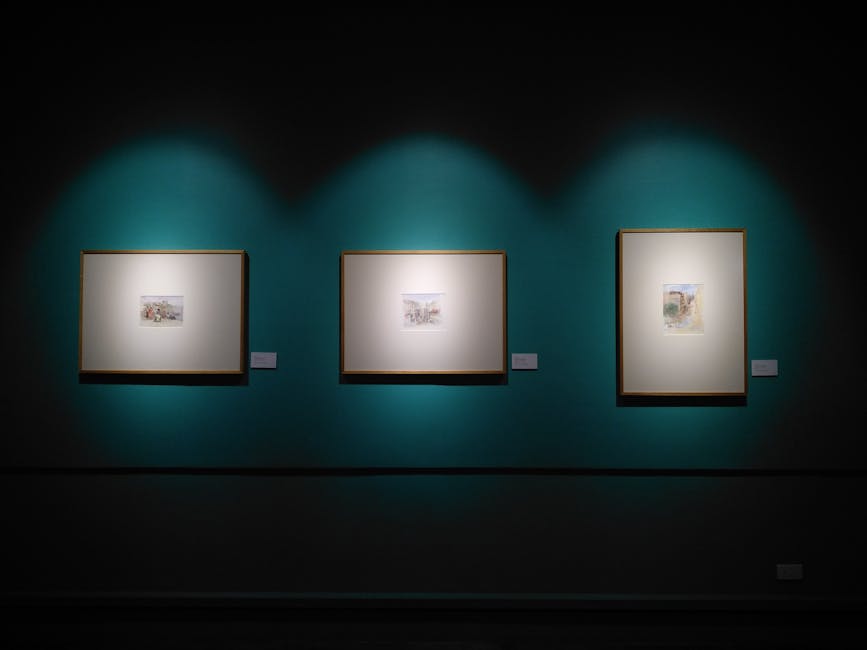Cuiabá, the capital of Mato Grosso, is a gateway to Brazil’s diverse history and vibrant culture. From archaeological treasures to religious artefacts, the region’s museums offer an insightful journey through time. Here, we explore a selection of museums in Cuiabá and nearby regions that are well worth a visit.
Museu de História Natural Casa Dom Aquino (Cuiabá)

The Museu de História Natural Casa Dom Aquino is a fascinating destination for anyone interested in the natural history and archaeological heritage of the region. Located in the heart of Cuiabá, this museum showcases a variety of fossils, including those of giant prehistoric creatures like the Pampatherium humboldti (a large armadillo) and the Eremotherium laurillardi (a giant ground sloth). The exhibits are arranged chronologically, illustrating the evolution of life in the region across geological eras. One of the highlights is the representation of the Holocene epoch, complete with a lifelike bio-lake, cascading waterfall, and indigenous statues, all designed to transport visitors back in time.
Museu de Arte Sacra de Mato Grosso (Cuiabá)
Housed in the historic Seminário Nossa Senhora da Conceição, the Museu de Arte Sacra de Mato Grosso is a treasure trove of religious art and artefacts. This museum is a must-visit for those fascinated by the rich ecclesiastical history of the region. The building itself, with its eclectic architectural style, is as much a part of the experience as the exhibits within. Here, visitors can find intricately designed pieces from the 18th century, including remnants from the old Catedral do Bom Jesus de Cuiabá, as well as an impressive collection of colonial musical instruments.
Museu Histórico de Sinop
Located in the town of Sinop, this museum offers a deep dive into the history and cultural development of the region known as the “Capital of the Nortão.” Opened in 2008, the Museu Histórico de Sinop houses nearly two thousand items that document the city’s growth, from photographs and documents to everyday objects used by the early settlers. One of the standout features is the digital archive, which includes a unique collection of photographs of pioneering families, offering a glimpse into the lives of those who played a key role in building the city.
Museu de História Natural de Alta Floresta

For those intrigued by the natural history of the Amazon region, the Museu de História Natural de Alta Floresta is a destination not to be missed. Established in 2005, this museum is home to an impressive collection of fossils and archaeological artefacts that have been unearthed in the area. Highlights include the fossilised remains of the giant sloth and various indigenous stone tools, providing a fascinating insight into the region’s prehistoric past. The museum also features a unique amphitheatre named Cineclube Mastodonte, which regularly hosts educational events and screenings.
Museu Histórico e Arqueológico de Vila Bela da Santíssima Trindade
Venture to Vila Bela da Santíssima Trindade, and you will find the Museu Histórico e Arqueológico Joaquim Marcelo Profeta da Cruz. This museum is dedicated to preserving the cultural and historical heritage of the region, with a particular focus on the indigenous and African influences that have shaped its identity. The permanent exhibition, “Vila Bela sem Fronteiras,” explores these themes through a variety of artefacts, including sacred works, archaeological findings, and relics from the area’s quilombola communities. Nearby, the ruins of the old Matriz Church, a reminder of the city’s colonial past, add an extra layer of historical intrigue.
Museu Histórico de Cáceres
Perched along the banks of the Paraguay River, the Museu Histórico de Cáceres offers a window into the colonial past of this charming city. Founded in 1978, the museum is housed in a historic building that itself tells a story, with its architecture reflecting the city’s rich heritage. The museum’s collection includes a range of historical documents, photographs, and objects that chronicle the development of Cáceres from its early days to the present. A notable exhibit is a letter from Emperor Dom Pedro II, which honours a local hero from the Paraguayan War.
Exploring these museums in Cuiabá and beyond provides a unique opportunity to connect with the history, culture, and natural wonders of Mato Grosso. Whether you are a history buff, an art enthusiast, or simply curious, these institutions offer something for everyone.







